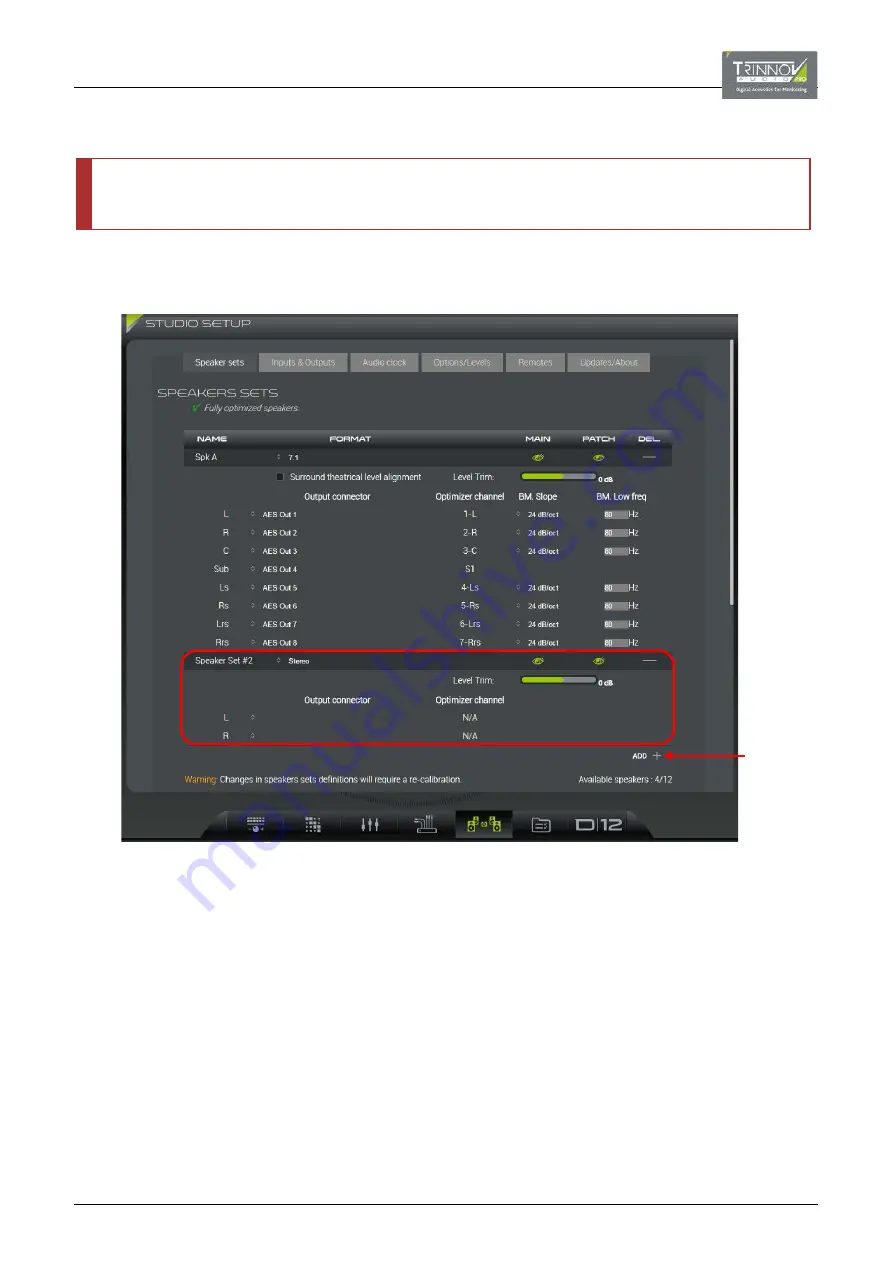
7.5.2.2
EDITING THE OPTIMIZED SPEAKER SETS
ATTENTION!
If you make changes to any speaker set (optimized or non-optimized), you will need to re-calibrate the speakers.
See
Possible Operations
Click on the
ADD +
button to create a new speaker set - the entry is given a default name (e.g.
Speaker Set #2
) and a generic
set of parameters (
Format
=
Stereo
,
MAIN
= on,
PATCH
= on,
Level Trim
=
0dB
):
The number of optimized speaker sets is limited by the number of Optimizer
®
channels supported by your D-Mon processor. The
number of channels remaining is indicated below the
ADD +
button. In our example,
Available speakers: 4/12
means that there
are 4 mono Optimizer channels remaining from the 12 available in our D-Mon|12.
For all speaker sets, you can define the following:
•
Name
– click to edit the name of the speaker set. You can click once to position the cursor, or double-click to select text you
wish to overwrite. Type in a name; the usual copy, cut and paste functions are available. Each name can be up 16
characters, and all alphabetical and numerical signs are accepted.
•
FORMAT
– click to choose a format from the drop-down menu. The options will vary depending on your D-Mon model. If you
choose a surround format, then the component channels are always allocated in the same order, up to the relevant number
of channels: L, R, C, Sub, Ls, Rs, Lrs, Rrs, HL, HR, HLs, HRs.
•
MAIN
&
PATCH
– the “eye” icons determine whether a speaker set is visible in the
MAIN
(CONTROLLER) and
PATCH
(SESSION ROUTING) pages. When enabled, the icon lights in green.
•
Level Trim
– click and drag on the slider to adjust the output level for all channels of the speaker set. Alternatively, double-
click on the white text field, type in a value (e.g. 0dB) and press Enter.
This level is done on top of the Optimizer calibration, which normalize the levels across all speakers. Note that it is also
possible to set a per speaker level trim in the OPCP interface Processor -> Outputs, which is therefore combined with this
speaker set level at processing.
•
Output connector
– click to assign a physical output to each channel of the speaker set – you can choose any AES or
analog output. Once assigned, the
Optimizer channel column
updates.
Click here to ADD a
new speaker set






























